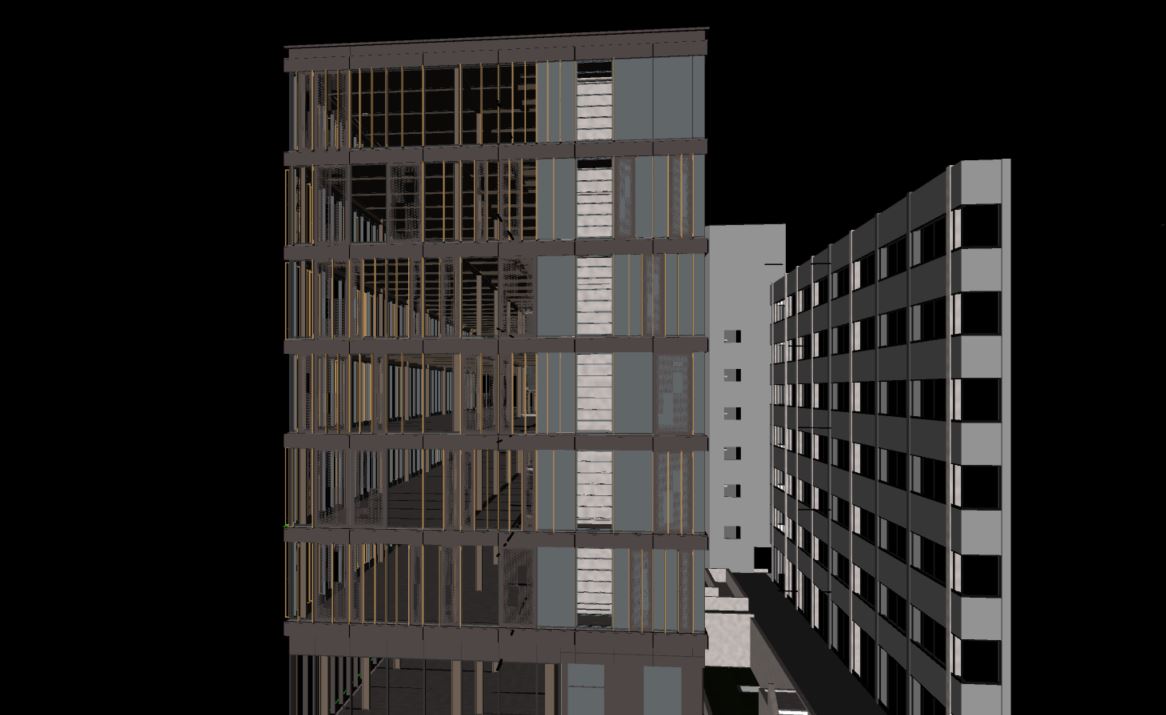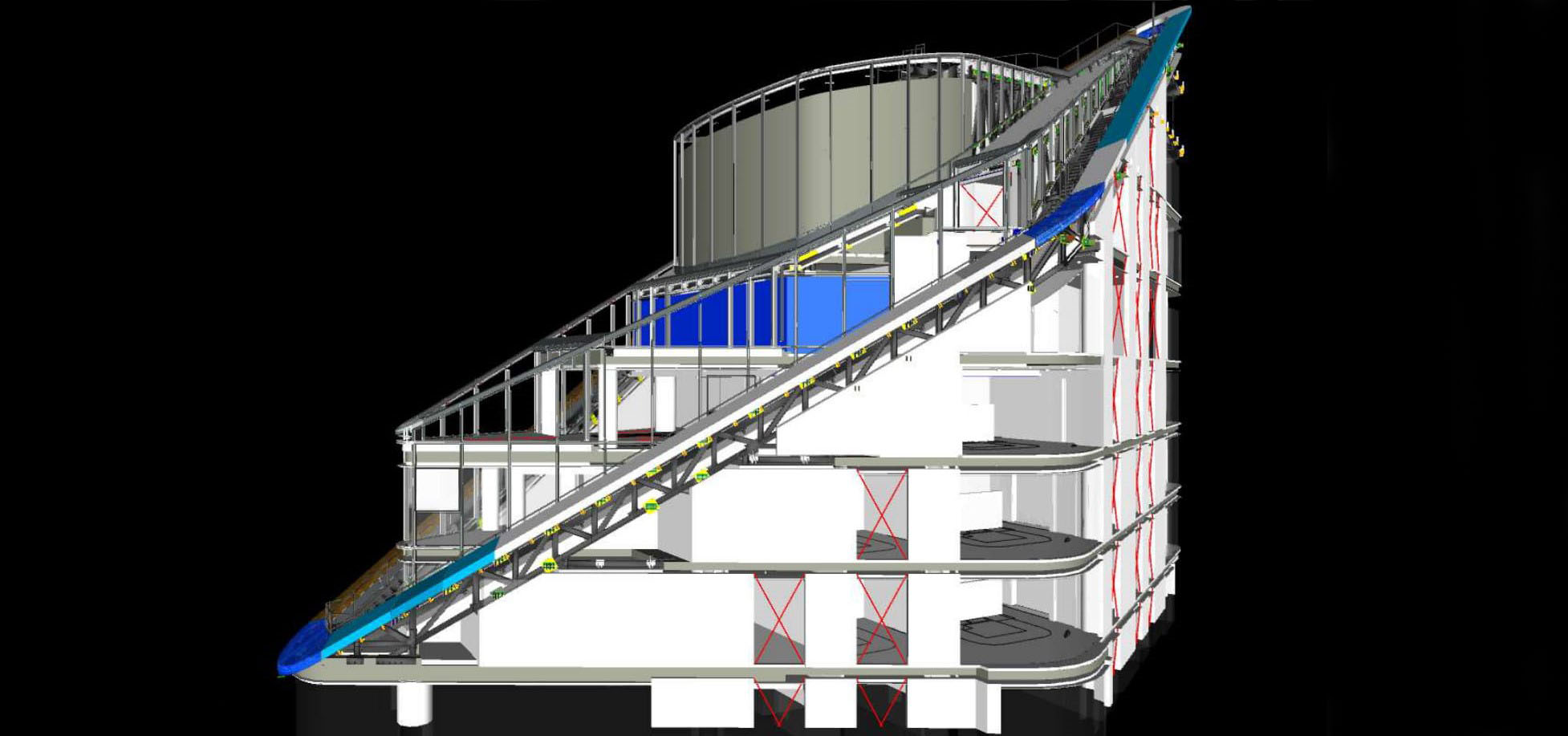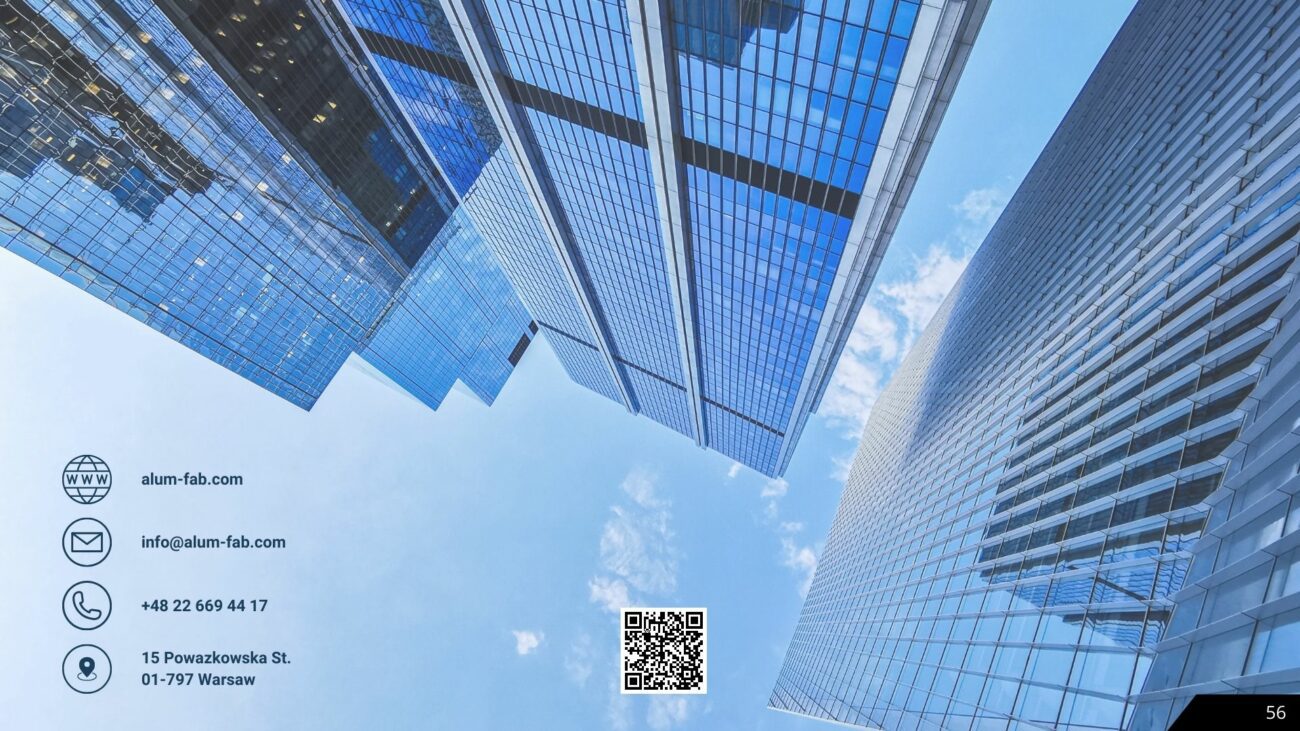Building information modeling – BIM is the combination of people, technology and processes aiming to improve efficiency in construction.
What is BIM?
BIM proposes a brand new and comprehensive look at the construction industry. It refers to the process of joint design, construction and operation of building with the usage of a consistent system of 3D models in place of separate design drawings. BIM involves people and technology to reduce time and costs as well as improve efficiency in the construction of residential buildings, commercial high-rise buildings, hospitals, offices, etc.
BIM is not only a set of software or simply designing with 3D models. BIM combines elements of project modeling with the huge amount of information that makes up the project, as well as the process of exchanging this information with other entities and parties involved in the construction process. While the traditional methodology of construction process relied on multiple formats and distributed processes which quickly got out of sync after making any changes, the information flow in BIM allows for a much more dynamic and synchronized approach to project management, information and the construction itself.
Why should you use BIM?
BIM serves to improve efficiency of a construction process, minimization of the construction wastage as well as improving the building quality and efficiency. This days many technologically advanced industries utilize the concept of progress using the method of "quick failure". This means that experimenting and trying new solutions – even if the first attempt is unsuccessful – leads to the elimination of defects, the repetition of an innovative idea and often ultimate success. In the construction industry, where the stakes are too high to experiment with a living construction organism, this concept only works in the digital world. Planning the construction, before the proverbial first spade is driven into the construction site, is the only way to "quickly failure". Nobody will take the risk of experimenting in the next stages of the construction process, because today it is much more than just experimenting with bricks and mortar. Surviving in a business with enormous time and financial pressure, deadlines are quick and in addition you have to manage large and dispersed work teams and huge fiscal flows does not leave much room for risky experiments.
In the case of traditional methods used in the construction process, in which teams move from one project stage to another, some of the information from the previous stages is inevitably lost. Thanks to the BIM information is gathered digitally, to be available when they are needed, wherever they are needed and to whoever they are needed by. Adopting BIM means establishing a continuous flow of information. Every step of the construction process – from early planning and design to construction, operation and maintenance – is recorded digitally. It opens completely new possibilities for better efficiency, accuracy and, above all, effective cooperation between the teams and entities involved in the construction. We’re living in the times of great automation, digitization and virtualization. Each business process is digitized in most industries, and each decision is conditioned by data, which makes access to information an inestimable value. The World Economic Forum has announced the entry into the digital age "fourth industrial revolution" in which digitally coupled machines powered by gigabytes of data will exponentially change processes in every industry.
Why is BIM important?
Dynamically linking design, analysis and documentation into a BIM workflow, most of the effort in the construction process at each stage of execution is transferred back to the detailed design phase. Thanks to BIM, the possibility of influencing the efficiency of the construction process is high, while the cost of introducing design changes is relatively low and possible at every stage of implementation. This allows engineers to spend more time evaluating various construction scenarios to optimize the design, and less time creating construction documentation.
The functions of BIM in the construction process can be summarized in ten main points:
- Thanks to the rapid exchange of design information, you can explore variations of architecture, structure and engineering systems much faster, resulting in an accurate and optimized building design
- All your drawings, plans, designs and documentation data can be contained in one comprehensive 3D model, avoiding the loss of information, its overlooking or information going missing, and enabling more informed decisions based on the set of available data.
- The necessary technical calculations for ventilation, heating and gas piping systems can be performed quickly and easily.
- All geometric and spatial data required to perform energy calculations can be obtained directly from the model.
- Compliance with environmental requirements is made easier and the increased efficiency helps lower the life cycle costs of the building.
- The integration of cost data and schedules enables online cost estimation and daily visualization of construction progress.
- Accurate measurements of planned works can be created directly from the model.
- The data required for purchasing control can also be calculated directly from the model, optimizing the purchasing process.
- The detailed model contains all the data and geometry required to accurately install the MEP systems.
- Upon completion of construction, the next version of the model will inform decisions and facilities management systems, enabling preventive maintenance and repair.
What are the advantages of BIM?
Thanks to the BIM model, which includes comprehensive 3D modeling of all MEP structures and systems, investors and building owners are able to reliably evaluate offers from construction companies using a quantitative specification priced on the basis of the model. The total price quoted in the bid will therefore reflect the actual cost of building materials, and not unreliable estimates.
These days building owners focus on sustainable development. Planning the construction based on the BIM 3D model instead of 2D drawings provides much more accurate results, this allows architects and contractors for much more accurate determination of the amount of building materials required for construction. If this estimate is accurate, the budget assumed in the offer will be closer to the final budget and a radical reduction in material losses can be achieved.
The building as a whole consists mainly of materials and installations. When product manufacturers' specifications are introduced into the BIM ecosystem early in the design stage, installation systems can be tested and designs can be easily and quickly changed if necessary. Improved efficiency of the systems will benefit the interested parties long after construction is completed.
Precise BIM model of the building may also allow for easier obtaining of the feedback from the possible future users. Thanks to previews and virtual walks, you can properly show the digitized building in the smallest detail. Taking into account the views of future residents at the design stage helps in creation of more successful buildings.
Communication is also a crucial aspect of the eventual success of the building as well as the constant challenge. Thanks to BIM all of the changes, such as deadlines, schedules, availability of materials and synchronization of the work of teams of specialists, can be coordinated in real time via digital applications and mobile devices, keeping everyone informed. Loss of data can be also avoided when all of the parties are working with the same easily accessible and up-to-date digital BIM model. In addition, technologies such as BIM and AR can lead to a proactive approach that helps control the construction process and reduce potential errors. The BIM model viewer offered by PlanRadar (https://planradar.com.pl) enables construction teams or property managers to obtain BIM benefits wherever they are.
In construction industry, investors must ensure that the original version of the building is as good as possible, because it is not possible to create a second version without costly renovations, corrections and additional investments. BIM can help avoid a "we improve this design in the field" approach that easily forces costs out of control. BIM allows for the designing, testing, analysis and possible corrections of the first and only version of the building. The designing process can be repeated many times and evolve. Thanks to this process every consecutive variant will be better than the previous one, and once the foundations are excavated, the design will not need to be tweaked during construction.
BIM helps the building owners achieve predictive maintenance levels, which means unplanned downtime can be reduced and maintenance cycles can be accurately planned. It allows for the better precision in facility management budgeting. The facility management team will not be surprised by unexpected changes in equipment – all of these data points can be predicted using the BIM model. Analyzing BIM data from the entire building portfolio also enables the owner to define maintenance cycles for major and minor building systems.
The use of the BIM model in facility management is gaining more and more interest as building owners realize that this can reduce costs over time. If you believe the iceberg hypothesis (that only 1% of the lifetime cost of a building is spent on design and 70% on the maintenance), the advantage of BIM is that by shifting part of the investment costs into the design and increasing this 1% by a small amount, owners can reduce maintenance costs by up to 70%.
As can be seen, BIM pays off at every stage of the construction process as well as in the building operation phase of a construction.












